Whether you are on a diet for weight loss or simply want to eat healthy and watch your nutrition cooking your own food will give you a lot more control over your diet plan. Let recipes like these (we have thousand of recipes, old and new) inspire you to get cooking and put together your own meal plans.
Recipe Category: Candy
Recently Viewed
Candy Bar Cookies Recipe
Coconut Caramel Candy Mexican Recipe
Party Time Popcorn Bars Recipe
Dots Orange Slice Cake Recipe
Movie Candy Caramel Corn Recipe
Microwave Divinity Candy Recipe

Honey-Nut Spiced Arab Candy Mexican Recipe
Ingredients
- alfajor de miel con nueces y especias – honey-nut spiced arab candy
Makes 8 to 10
- 2 cups honey
- 1¼ cups ground almonds
- 1¼ cups ground hazelnuts
- 1½ cups bread crumbs
- ¼ cup toasted sesame seeds
- 1 teaspoon freshly ground canela
- pinch of ground cloves
- ½ teaspoon toasted coriander seeds, ground
- ½ teaspoon toasted aniseed, ground
- 16 to 20 rice wafers
Method
- Heat the honey in a medium pot over low heat until smooth, 3 to 5 minutes
- Add 1 cup of the almonds, 1 cup of the hazelnuts, and the bread crumbs and stir to combine
- Once the mixture starts coming together, add the sesame seeds, canela, cloves, coriander, and aniseed and stir for a couple of minutes until well blended
- Pour into a bowl and let sit until cool enough to handle
- Put a bit of the mixture on top of a rice wafer, spreading it around evenly, and press with your hands to about ¼-inch thickness (you can dampen your hands slightly if the mixture is too sticky)
- Sprinkle some of the remaining ¼ cup almonds and remaining ¼ cup hazelnuts on top, pressing lightly, then put another wafer on top and press so it sticks
- These are best eaten a day or two later
- You can store them in an airtight container in a cool, dry area
- Serve whole or cut into quarters
- Panaderias (bread bakeries) are found all over Mexico, representing one of the main pillars of Mexican cuisine
- Small villages have their panaderias close to the main square, like a church
- In bygone days, panaderias were owned by the Spanish, who were always identified by their berets and cigars
- They were the ones who taught Mexicans the secrets of the ovens, which were fueled by coal or wood
- When the panaderia opens its doors, a familiar, comforting aroma envelops you
- After a quick glimpse at the crispy textures and colorful toppings, you pick up a round aluminum tray and a set of banged-up metal tongs, and fill the tray with shapes of ears, flowers, shells, horns, and hearts
- Each one contains its own particular taste experience
- You pay and hurry outside
- Some panaderos use fresh yeast; others use dry
- Some use pulque (a fermented Drink made from maguey nectar) or beer
- The skillful panaderos begin their day at around 3:00 A
- Bread is the cornerstone of a good breakfast and is usually accompanied by hot chocolate or coffee
- Panaderias bake twice daily as a general rule, ensuring warm, fresh baked goods for breakfast, merienda (supper), and dinner
- The bread itself is only slightly sweetened
- Most of its sweetness comes from fillings, toppings, and glazes
- These are made from fruit, sugar, chocolate, and cream
- Most panaderias have bolillos and teleras, savory breads that are used to make tortas, but the majority of the selections are sweet ones
- In the beginning of the twentieth century, pan dulce became affordable to poor people, who called it tecuarin
- The bread was salty but with a sweet topping, and many types of bread follow that format today
- The basic ingredients of wheat flour, water, sugar, and salt have remained through time, but others have changed
- The traditional lard or butter has been replaced with vegetable shortening, margarine, or oil; the hen, duck, or turkey eggs have been replaced with chicken eggs; the use of pulque or beer as a fermenting agent is almost gone; and the use of prepared flours and artificial flavorings has increased as an unfortunate result of industrialization and the economy
- Some places, however, have kept the integrity of the traditional sweet breads
- Most Mexicans will say that the ones made in the old-style brick or stone ovens, where the logs are burned hours in advance, have a wonderful distinctive flavor
- Some small cities and villages-including Zaca-tlan in Puebla and Pomuch, Campeche, and Acambaro in Guanajuato-depend on bread as their main source of income
- For these panaderos, bread is serious business
- As with other sweet confections, each region has its own specialty when it comes to pan dulce
- Pan ranchero, country-style bread often flavored with aniseed, is made in Zacatecas; corn pemoles in Aguascalientes; coyotitas, crunchy corn cookies, in Sonora; and corrientes, a porous bread eaten with hot chocolate, in Morelia
- Joletepec is known for its mestizas, a lightly sweetened bread in the shape of a heart adorned with a braid around the edges
- It is said that in the old days, boyfriends would take a mestiza to their future in-laws when they asked for their daughter’s hand in marriage
- The more ornate and intricate the mestiza, the greater his wealth
- If you visit San Juan Huactzingo, Tlaxcala, chances are you will leave smelling a bit like wheat and sugar because many homes have their own calabazeros (pumpkin-shaped wood-fired ovens)
- In the town of Calpan, bread is wrapped in white zapote leaves to keep it dry and give it a subtle, sweet flavor
- Similarly, in Tinguidin, a town in Michoacan, freshly baked bread is wrapped in banana leaves before it is transported from the different panaderias
- Members of the purepecha indigenous community make breads in the shapes of animals and people adorned with belts and bows for their offerings in certain celebrations, while the Tepehuas of Tenango de Doria make necklaces out of bread and marigolds for their flower dance
- And weddings, baptisms, and offerings have their distinctive breads depending on the region
- Mexican culture even conjures death through bread, the symbol of life
- Many of these recipes require a bit of planning, so be sure to take this into account
- I have tried to go back to pan dulce’s roots, when, as I can only imagine, bread was richer
- Although I personally like to use fresh yeast instead of dry, I believe it is mostly for the sake of tradition; using dry active yeast will not terribly affect the end product

Full List of Candy Recipes
Full List of Dessert Recipes
Recently Viewed
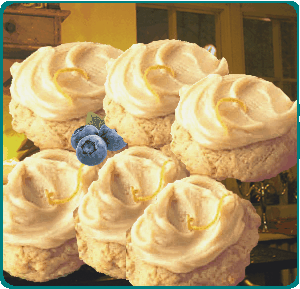 Candy Bar Cookies Recipe:
Candy Bar Cookies Recipe:Preheat oven to 325:F Sift flour, baking powder and salt. Set aside. In large bowl using an electric mixer, beat butter and sugar on medium speed and until mixture looks Continue Reading →
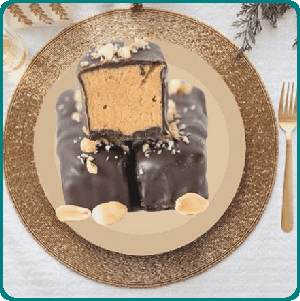 Peanut Butter Snacks Recipe:
Peanut Butter Snacks Recipe:In a small microwavable bowl, combine peanut butter, butter, and spices. Microwave on HIGH 1 minute, or until butter melts. Mix well. In a 13x9' inch baking dish, Continue Reading →
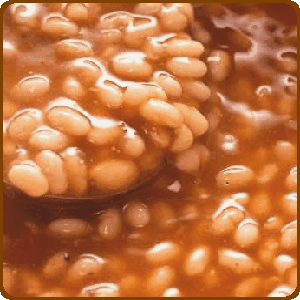 Bean Candy Mexican Recipe:
Bean Candy Mexican Recipe:Cover the beans with abundant cold water and soak overnight Drain and put the beans in a medium pot with the water and canela Bring to a boil and adjust the heat so it's Continue Reading →
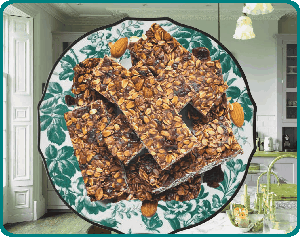 Party Time Popcorn Bars Recipe:
Party Time Popcorn Bars Recipe:Line 9x13' pan with foil so that foil extends over sides; butter foil. In large bowl, combine popcorn, nuts and cranberries; set aside. In medium saucepan, combine Continue Reading →
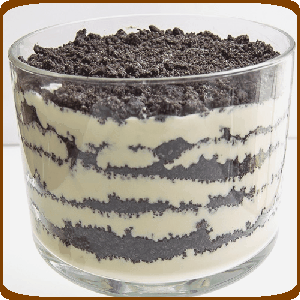 Easy Dirt Cake Recipe:
Easy Dirt Cake Recipe:CRUSH THE OREOS: Reserve 8-10 Oreos and cut into fourths. Set aside Crush Oreos in either a food processor or a Ziplock bag + rolling pin until they are finely crushed Continue Reading →
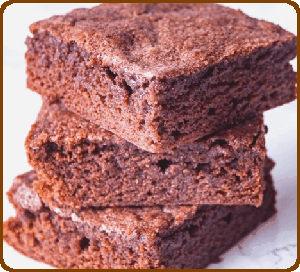 Low Fat Peppermint Brownies Recipe:
Low Fat Peppermint Brownies Recipe:Heat oven to 350 degrees. Spray square pan, 8 X 8 X 2 inches, with nonstick cooking spray. Mix sugar, margarine, vanilla, peppermint extract and egg whites in medium Continue Reading →
